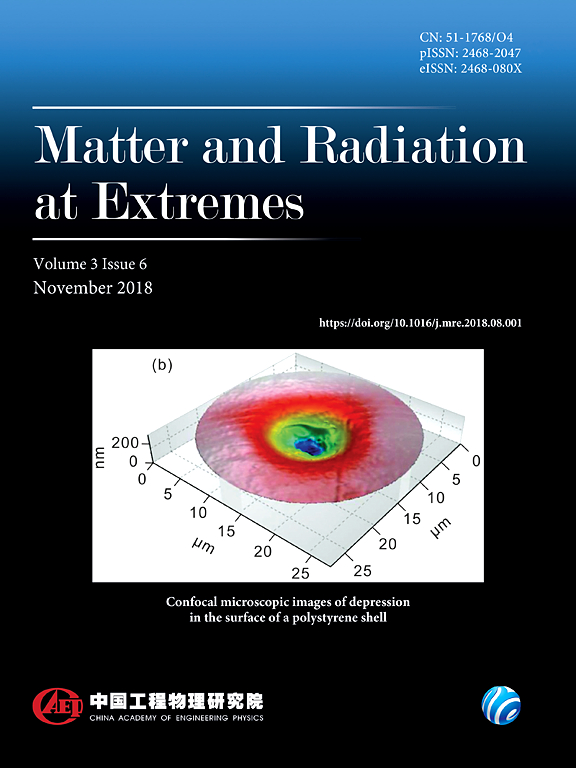High-pressure minerals and new lunar mineral changesite-(Y) in Chang’e-5 regolith
IF 4.7
1区 物理与天体物理
Q1 PHYSICS, MULTIDISCIPLINARY
引用次数: 0
Abstract
Forty-five years after the Apollo and Luna missions, China’s Chang’e-5 (CE-5) mission collected ∼1.73 kg of new lunar materials from one of the youngest basalt units on the Moon. The CE-5 lunar samples provide opportunities to address some key scientific questions related to the Moon, including the discovery of high-pressure silica polymorphs (seifertite and stishovite) and a new lunar mineral, changesite-(Y). Seifertite was found to be coexist with stishovite in a silica fragment from CE-5 lunar regolith. This is the first confirmed seifertite in returned lunar samples. Seifertite has two space group symmetries (Pnc2 and Pbcn) and formed from an α-cristobalite-like phase during “cold” compression during a shock event. The aftershock heating process changes some seifertite to stishovite. Thus, this silica fragment records different stages of an impact process, and the peak shock pressure is estimated to be ∼11 to 40 GPa, which is much lower than the pressure condition for coexistence of seifertite and stishovite on the phase diagram. Changesite-(Y), with ideal formula (Ca8Y)□Fe2+(PO4)7 (where □ denotes a vacancy) is the first new lunar mineral to be discovered in CE-5 regolith samples. This newly identified phosphate mineral is in the form of columnar crystals and was found in CE-5 basalt fragments. It contains high concentrations of Y and rare earth elements (REE), reaching up to ∼14 wt. % (Y,REE)2O3. The occurrence of changesite-(Y) marks the late-stage fractional crystallization processes of CE-5 basalts combined with silicate liquid immiscibility. These new findings demonstrate the significance of studies on high-pressure minerals in lunar materials and the special nature of lunar magmatic evolution.嫦娥五号留下的高压矿物和新的月球矿物变化石-(Y)
在 "阿波罗 "和 "月球 "任务完成45年后,中国的嫦娥五号(CE-5)任务从月球上最年轻的玄武岩单元之一采集了1.73千克的新月球材料。嫦娥五号月球样品为解决与月球有关的一些关键科学问题提供了机会,包括发现高压硅多晶体(seifertite和stishovite)和一种新的月球矿物--变化石(Y)。在CE-5月球碎屑中发现seifertite与stishovite共存。这是首次证实在返回的月球样品中存在海泡石。海泡石具有两种空间群对称性(Pnc2 和 Pbcn),是在冲击事件的 "冷 "压缩过程中由类 α 角闪石相形成的。余震加热过程将一些seifertite转变为stishovite。因此,这块二氧化硅碎片记录了冲击过程的不同阶段,冲击峰值压力估计为 11 至 40 GPa,远低于相图上seifertite和stishovite共存的压力条件。理想公式为(Ca8Y)□Fe2+(PO4)7(其中□表示空位)的Changesite-(Y)是在CE-5摄 影岩样本中发现的第一种新的月球矿物。这种新发现的磷酸盐矿物呈柱状晶体,是在CE-5玄武岩碎片中发现的。它含有高浓度的Y和稀土元素(REE),含量高达 ∼ 14 wt. % (Y,REE)2O3。变化石-(Y)的出现标志着CE-5玄武岩的后期分块结晶过程与硅酸盐液不溶性相结合。这些新发现表明了月球物质中高压矿物研究的意义以及月球岩浆演化的特殊性。
本文章由计算机程序翻译,如有差异,请以英文原文为准。
求助全文
约1分钟内获得全文
求助全文
来源期刊

Matter and Radiation at Extremes
Physics and Astronomy-Atomic and Molecular Physics, and Optics
CiteScore
8.60
自引率
9.80%
发文量
160
审稿时长
15 weeks
期刊介绍:
Matter and Radiation at Extremes (MRE), is committed to the publication of original and impactful research and review papers that address extreme states of matter and radiation, and the associated science and technology that are employed to produce and diagnose these conditions in the laboratory. Drivers, targets and diagnostics are included along with related numerical simulation and computational methods. It aims to provide a peer-reviewed platform for the international physics community and promote worldwide dissemination of the latest and impactful research in related fields.
 求助内容:
求助内容: 应助结果提醒方式:
应助结果提醒方式:


